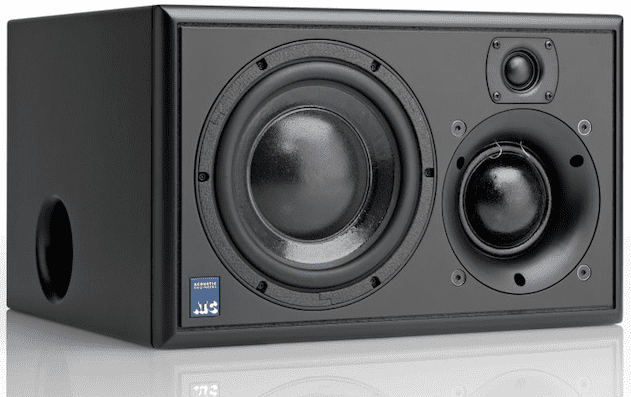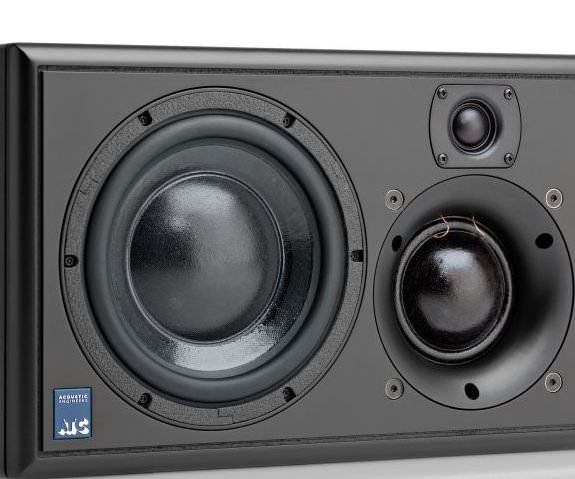Does the ultimate nearfield monitor exist? If it does, Greg Scarth thinks he might have found it.

It’s unheard of for Attack to turn down the opportunity to review a product on the grounds that it’s too good for us, but that unlikely situation almost presented itself when ATC offered us a pair of their SCM25A Pro monitors. These compact nearfields from the long-established British loudspeaker specialists are clearly of interest to us: top-quality monitors with an incredible pedigree and specifications which suggest they should handle the unique challenges of producing and mixing dance music.
But there’s one unavoidable elephant in the room: the price. Let’s get it out of the way before we even go any further: ATC’s company philosophy, “to provide nothing less than the best sound reproduction money can buy,” isn’t easily reconciled with keeping down costs.
So yes, the SCM25s are very, very expensive – there’s no getting around that. But that certainly isn’t a guarantee that they’ll be suitable for dance production. At this price point it’s a reasonable assumption that they’re primarily designed for commercial studios, which almost by definition tend to be more concerned with pop and rock production rather than dance. Our main concern here is whether they can also perform in the context of dance music.
The lows
The SCM25s are a compact three-way nearfield design based around a 7-inch carbon-paper cone bass driver and 3-inch soft dome mid driver both hand-built by ATC, a 25mm neodymium soft dome Vifa tweeter and MOSFET-based class AB amps. ‘Compact’ is a relative term here; the SCMs are only a little bigger than Yamaha NS10s when viewed from the front, but they’re nearly as deep as they are wide and they weigh 30 kilograms each. They’re designed exclusively for use in horizontal placement, for reasons we’ll get to shortly.
Like their bigger brothers, the SCM25s use a ported enclosure – in this case the port is on the side of the unit rather than the front baffle. However, they’re also supplied with dense foam rubber bungs which can be inserted into the ports in order to convert them to a sealed, infinite baffle design. A couple of weeks ago I would have said that I generally tend to prefer the sound of infinite baffle designs for their more controlled, tighter bottom end. The SCMs proved me wrong. The sound with the ports open is controlled, tight and precise.
Some speaker designers use ports to compensate for weaknesses in the design, propping up the bottom end to give the impression of deep bass response. In this case it seems as though ATC have exercised some very welcome restraint, tuning the port to allow the bass driver to operate in optimum conditions rather than artificially extending the bass response. You’ll find monitors for £250 which claim to offer bass response as low as the SCM25As from 5-inch drivers; this is a good reminder that specs on paper don’t tell the full story. The bass response may not be the deepest on paper, but the precision makes it incredibly usable. There’s absolutely no question that I’d be happy to use these monitors without a sub. The bungs are best reserved for situations where speaker placement can’t be optimised to allow the ports to work correctly. In all other cases, we’d suggest they’re best left out.
And the highs
The bottom end of the SCMs is clearly top quality, but the higher frequencies are equally as impressive. The mid range and highs are exceptionally revealing without being fatiguing. Again, the general impression here is that they’re tight, controlled and accurate. ATC’s famous soft dome mid-range driver and the Vifa-sourced tweeters provide exceptional clarity without being overly fatiguing.
It’s worth noting that the SCM25s are designed exclusively for operation in their horizontal (landscape) position. Off-axis response on the horizontal plane is incredibly impressive (±80° coherence), resulting in a huge sweet spot as you move around the centre spot – ideal for working with a large collection of equipment provided it’s all positioned at roughly the same height. However, stand up just a few inches and you’ll immediately hear a clear change in frequency response (just ±10° coherence in the vertical plane, primarily as a result of the relative placement of the tweeters and mid-range drivers). Critical decisions must be made from a listening position at the correct height.
Of course, you’d expect a high-end monitor to take things in its stride, but there are still areas where even monitors in this price bracket begin to struggle with certain electronic material. A couple of years ago I had the opportunity to take part in a shootout of money-no-object nearfield monitors, assessing them all from the perspective of electronic music production. What soon became apparent as we ran through the monitors on test – a collection of just about every serious monitor manufacturer’s top-of-the-range nearfields – was that they all fared respectably on slower, more sparse material, but there were certain easily identifiable areas where many began to run into difficulties: extended periods of sub-bass interspersed with fast-transient kicks; fast-paced, busy material covering the entire frequency range; maintaining clarity and flat frequency response at lower listening levels – a surprising amount of very expensive monitors exposed flaws when put to the test.
The SCM25s excelled in all of these apparently difficult areas. No matter what I threw at them – from individual instruments to full mixes; from running them at low levels at eardrum-bursting levels – they performed exceptionally.
Conclusion
The SCM25s are incredible speakers. However, my recommendation can’t be without a couple of very minor caveats. The test pair arrived around a week before I moved studios and they soon exposed the weaknesses of my new, slightly smaller and as-yet-untreated room, which is no criticism of the speakers as such but a reminder of the fact that adequate room treatment is essential in order to get the most out of any monitor. The SCMs offer very little in the way of adjustability. The only back-panel options are a gain trimmer and a variable bass boost control (up to +3 dB at 40 Hz). As such, if your room isn’t up to scratch you probably won’t be able to tame them with adjustments as you may be able to with some other monitors.
But you’d hope that anyone considering such a serious pair of speakers would already be aware of these potential pitfalls. The truth is that the SCM25s make every other pair of nearfields I’ve ever used suddenly seem inferior. At this price, you’d be forgiven for expecting that. The price is undoubtedly the sticking point, but it’s justified by the quality. My only major criticism is that there’s absolutely no way I can afford them. At least now I know which monitors I’ll buy if I ever win the lottery.
The Verdict
Price: £7,156 per pair
Purchase: ATC – SCM25A Pro
The Final Word
Staggeringly impressive monitors. Not cheap, but still fairly priced.

02.55 PM
NEEEEEED!
06.10 PM
Aren’t these the same as the klein und hummel but much more expensive?!
http://www.amazona.de/test-kleinhummel-o300/
05.36 AM
No, they’re not the same. They’re similar in design and looks but the electronics, elements and all are not the same.
01.43 AM
Pmc or Atc Can’t make up my mind yet. What do youse reckon .
12.04 PM
I went from Genelec 8040’s to ATC SCM 50’s. Night and day is no exaggeration. ATC monitors are well worth the money, even though it was painful shelling out the cash.
12.06 PM
Forgot to say, so much about monitors is the room you are in and personal preference. If you are in the market for serious monitoring the only way to know for sure is to test them in your room. Dodge the Mickey Mouse online retailers and speak to pros like Funky Junk or KMR who’ll let you use them on demo.
06.43 PM
I had a pair of K&H O300 but switched to ATC SCM 25. These monitors are, just, so more detailed. Mixes improved in a day. You can definitely distinguish good and bad sound. Be very careful about proper positioning in the room. I can agree with the author, ATC SCM 25 is the ultimate nearfield if you can afford it.
07.18 PM
I have had a pair for 2 years after having searched in vain for speakers for over 20 years that will be a pleasure to listen to and yet revealing of faults. I have been through lesser ATC’s and PMC’s, countless passive speakers as well as the Klein and Hummels, and my search is over for life. Monitoring is a question I have not needed to consider for 2 years. They are very very good.